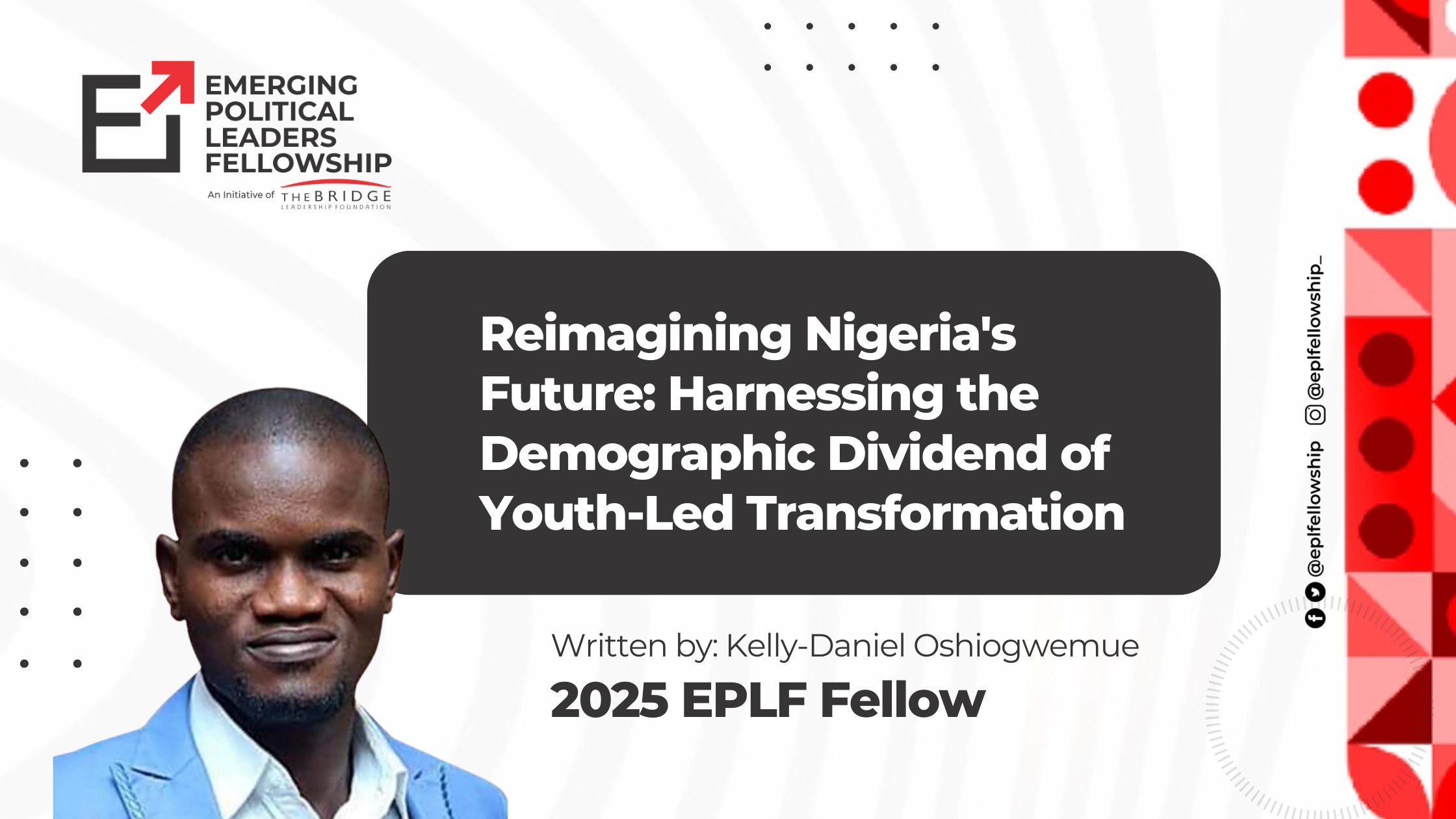An Article by Kelly-Daniel Oshiogwemue ; 2025 EPLF Fellow
Standing at the precipice of an extraordinary transformation with about 70% of its 220 million citizens under age 30, Nigeria commands Africa’s largest youth population; a demographic dividend that over all propels nations into unprecedented prosperity. According to the United Nations Population Fund, nations experiencing a similar youth population can achieve GDP growth rates 2-3 times the global average, when youth potential is properly harnessed. Despite this huge human capital advantage, Nigeria continues to grapple with 7.2% youth unemployment rate, 13.8% young people who are neither in employment, education, or training, and over 18 million out of school children (NBS 2023, UNICEF 2024). Certainly, this contradiction seriously jeopardizes ‘a once-in-a-generation opportunity that won’t return for centuries’, as empirical studies indicate that demographic dividends are time-bound, typically lasting only 20 to 30 years before aging populations alter the equation permanently. Countries like South Korea (1960-1990) and China (1980-2010) seized their demographic window to transform their nation from underdeveloped to developed economy. With Nigeria’s window now open, empirical evidence from the McKinsey Global Institute has suggested that failure to take decisive action within the next decade could transform these demographic dividends into a demographic disaster, increasing unemployment to 40 million by 2030.
Interestingly, strategic youth investment can accelerate national development within a single generation, this is what countries like Rwanda and Ghana as well as organizations like Tony Elumelu Foundation and the Bridge Leadership Foundation are currently empowering youths in business and leadership. Evidence reveals that young Nigeria visionaries under the age of 35 are currently unleashing unprecedented economic transformation with organization such as Paystack ($200M acquisition), Flutterwave ($3B valuation), Farmcrowdy (boost agricultural yields by 35-50%), and 200+ startups have raised over $800M since 2019. Furthermore, Nigeria’s creative revolution is staggering with the entertainment industry generating over $10B annually, providing thousands of employment opportunities. Despite these individual efforts, increased youth unemployment, skills gaps, limited capital access and brain drain are threatening to undermine this potential. In order to fully harness Nigeria’s demographic advantage, we must address infrastructure gaps and institutional bottlenecks.
Moving forward, governments at all levels must recognize youths as partners in sustainable development rather than passive recipients of government programs. Government must pivot from outdated educational models to 21st-century realities that focus on digital mastery, entrepreneurship, and critical thinking. Financial institutions must offer single digit interest loans products and youth-friendly investment opportunities that reduce barriers to creativity and innovation. Government must prioritize infrastructure investment in youth-concentrated areas, ensuring reliable power supply, internet connectivity and transportation networks, which are needed for productivity. By policy design, the government must create a guaranteed market access for youth enterprises to encourage business startup and growth as well as create political structures that accommodate meaningful youth representation in decision-making processes. Countries like South Korea and China successfully harnessed their demographic dividends through investment in human capital and infrastructure. At a defining crossroads, Nigeria can either choose to view its youth population as a burden that requires management or as visionary architects of renaissance.


Comments (3)
Young people will shape the ‘now’ and the future of the global South.
The need for better engagements by and with youths is dire.
Looking forward to spectacular performance among young change makers.
Well written Kelly, keep fuelling the fire bro
Well written Kelly, Keep fuelling the fire bro.